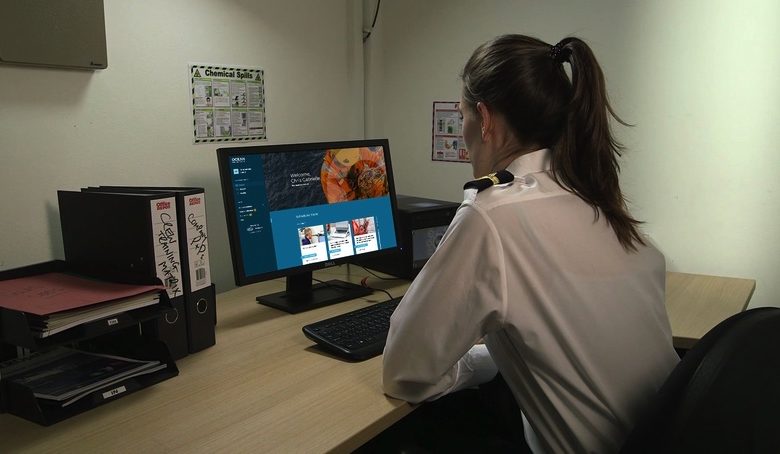
The so-called office onboard will be achieved by full broadband internet free for all for how much of the fleet by 2035? The opening installment of Connectivity with Inmarsat, a special report contained within Ship Concept 2035, our new magazine.
Connected ships are all the rage these days, discussed at length at myriad shipping conferences and at boardrooms across the world. Improved bandwidth is changing the business of shipping and how vessels and crews operate far out at sea, all happening at astonishing speed and yet Splash readers do not believe this advance will spread across all ships in the years ahead. Just 10% of readers in our survey believe so-called office onboard will be achieved for 100% of the global merchant fleet by full free broadband internet by 2035.
It’s unlikely that full internet broadband will be free for all onboard by 2035 or later, says Tore Morten Olsen, president of maritime at Marlink, a digital solutions provider.
“As we have seen in other areas of life and business, users pay one way or the other and remote communication at sea requires more than the average deployment of hardware and software,” Olsen explains, predicting greater competition as new low Earth orbit (LEO) providers offer services and a tiered market in terms of solutions provided at multiple price points.
By 2035, full broadband will be a baseline expectation
It’s unlikely to be free for all anytime soon, concurs Andrew Airey, who heads up Thai shipmanager Highland Maritime, thanks to the sheer growth in data collection, analysis, action, and CCTV monitoring and interaction requirements outstripping capacity growth.
More optimistic is Stamatis Tsantanis, chairman and CEO of Greek owner Seanergy Maritime.
“Thanks to falling satellite costs and rising demand for crew welfare and operational connectivity, a large portion – say 75% – of the fleet will likely have free, full broadband access—though full coverage across all vessels may take longer,” Tsantanis tells Splash.
Peter Schellenberger, founder of Novomaxis, a shipping consultancy, sees a minimum of 95% having free full broadband in 10 years time, citing the 2027 launch of Amazon’s Kuiper service as a “game changer”.
“By 2035, full broadband will be a baseline expectation, especially for vessels over 20,000 dwt,” argues Manish Singh, the head of Aboutships, a maritime advisory.
The bigger shift for Singh will be how this connectivity enables truly integrated fleet operations — where ship and shore are in constant sync, making decisions together in real time.
“The cost/benefit of equipping ships with terrestrial levels of connectivity is so attractive that laggards will find it difficult to compete with connected fleets,” Singh maintains.
Turning to the office onboard part of the question posed to readers, Ajay Chaudhry, CEO of shipmanagement at Synergy Marine Group, says this will mean cultural and working practice shifts as it will involve more digital workflow, cross-functional meetings, and real-time owner access.
“Connectivity must be paired with capability—the ability to conduct critical operations, access documents, and interact with experts without bandwidth barriers,” says Chaudhry, adding: “By 2035, this will be a standard expectation, rather than an innovation.”
Pradeep Chawla, the founder of MarinePALS, a training specialist, concludes by telling Splash how he is very much against the whole office onboard thinking.
“Seafarers have reached their limits with the number of tasks that they have to do. Yes, we need to give broadband onboard, but not for pushing more tasks to the ship’s staff,” Chawla says.
To access the whole of Ship Concept 2035 for free online, click here.




